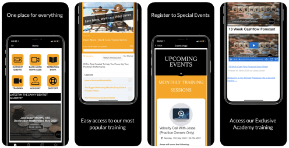We all feel overwhelmed sometimes. Regardless of the hours and effort we put into our work, we never really have it all together. The team doesn’t get us, the patients don’t appreciate the hard work we put into improving and maintaining their dental health, and the practice, regardless of all the effort, seems to never be smoothly functioning. And to top it all off, this feeling of inability to control matters takes a toll on our personal lives. We feel overworked yet incompetent.
Not just dentists, pretty much every professional, running his own business, or in roles of leadership tends to feel this way at different times. The team members never seem to be onboard and no matter how nicely you request them to do something, it is almost always lost in translation.
How do you fix this? Motivational interviewing is one effective strategy!
What is Motivational Interviewing and Why is It Important?
Motivational interviewing tends to resolve this problem of feeling overwhelm and incompetence by focusing on asking questions rather than answering them!
This process enables the person to attain clarity about their goals and objectives. This process provides coaching rather than mentoring. The difference being that unlike mentoring, the answers or solutions are not provided. Instead, assistance is offered so as to help individuals seek and find answers themselves.
Motivational interviewing is an effective method that you can apply with your team members, patients and even with yourself, so as to be more clear about your goals and objectives.
Ask Don’t Tell
At the core of this strategy is the fundamental rule of asking rather than telling. Instead of telling your team members what they should do, you ask them what, according to them, is the best approach to resolve a problem. It is more like a back and forth banter where ideas and probable solutions are exchanged. This method generates great success as it allows your team members to suggest a solution. Hence, they take more ownership of the process and thus are more eager to follow through.
The Four Steps of Motivational Interviewing
Primarily, there are four steps to finding success with motivational interviewing. You may need to conduct more than one interview in order to get through the entire four step process. We discuss these four steps in detail below:
Engagement
The first step is engagement. In this step, you are mainly focused on making the other person feel comfortable. To let them know that you value their opinion and understand where they are coming from. You establish a relationship of respect and empathy by truly lending your ears to what they have to say.
Select a Pathway
This is another essential component that enables you to remain focused on your ultimate goal. If you have ever had a heart to heart with someone, you’d know that it is quite easy to digress from the matter at hand. In order to successfully implement ideas, you need to remain focused on the problem singularly.
Evoking the Reasons behind Change- Digging Deeper
Next step is to encourage the person to define reasons for completing the task. Say, you would like to increase responsibilities for your dental assistant. What reasons do they believe they have for getting involved with new responsibilities? Do they believe they can efficiently take care of those extra tasks? If not, what could you or other team members do to help them with these new responsibilities? This step will make them more responsible and attach ownership to the new tasks This is where they begin to envisage the change.
Planning
Finally, you move on to the planning phase. This is where most leaders usually digress and they get tempted to provide answers rather than take suggestions on how to successfully complete a job. Instead, use the same evoking skills and questions to help come up with actual actions on how you and your team members are going to make the change happen.
Motivational Interviewing on a Personal Level
Motivational interviewing is just as effective in unlocking potential and solutions at a personal level. You know what they say about the mind being a great place to have ideas but not keep them? You’d be surprised by how much clarity answering your own questions can provide.
Simply jot down a list of questions related to the task at hand. Then start answering them out loud or in writing. This whole process in itself helps the system move towards making the desired change.
Engage With Team Members
All this sounds great on paper, but implementing it could become a real challenge. How do you draw the line between having team members resolve issues on their own and taking control back in your hands and risk losing focus of the team members? It could be a real challenge; and the best way to find balance is engagement.
You need to open pathways for communication with your team members. You cannot simply tell them to do something. You cannot go, ‘here’s the problem, here’s the solution, off you go, do it.’ This does not work!
You need to make conscious efforts not to provide the answers. As leaders, we are hard wired to get things done our own way. This mindset triggers what is known as ‘psychological reactants.’ As soon as someone feels like their freedom is threatened, they push back against it. Even if they agree with the overall idea being discussed, they would push back since they weren’t ‘part of the solution.’
This mindset leads to communication barriers where the team members think that their efforts are not being valued or ‘that the boss just doesn’t get them!’
You need to truly demonstrate empathy and compassion and attention to what they are saying. They need to feel valued and understood to provide the same kind of compassion and attention in return.
The Last Word
The fact is, a happy workplace can be spotted a mile away, and an unhappy, uncomfortable environment is just as easy to detect. You need to make the environment of your practice one of mutual respect and relaxation. Your patients should feel welcomed and comfortable, and this is only possible when they are met with smiling and inviting team members who value their roles and work space.
P.S. Whenever you’re ready …. here are 4 ways I can help you grow your dental practice:
1. Grab a free chapter from my book “Retention – How to Plug the #1 Profit Leak in Your Dental Practice”
The book is the definitive guide to patient retention and how to use internal marketing to grow your practice – Click Here
2. Join the Savvy Dentist community and connect with dentists who are scaling their practice too
It’s our Facebook group where clever dentists learn to become commercially smart so that they have more patients, more profit and less stress. – Click Here
3. Attend a Practice Max Intensive live event
Our 2 day immersive events provide access to the latest entrepreneurial thinking and actionable strategies to drive your practice forward. You’ll leave with a game plan to take your results to the next level. If you’d like to join us, just send me a message with the word “Event and I’ll get you all the details! – Click here
4. Work with me and my team privately
If you’d like to work directly with me and my team to take your profit from 6 figures to 7 figures …. just send me a message with the word “Private”… tell me a little about your practice and what you would like to work on together, and I’ll get you all the details! – Click here







